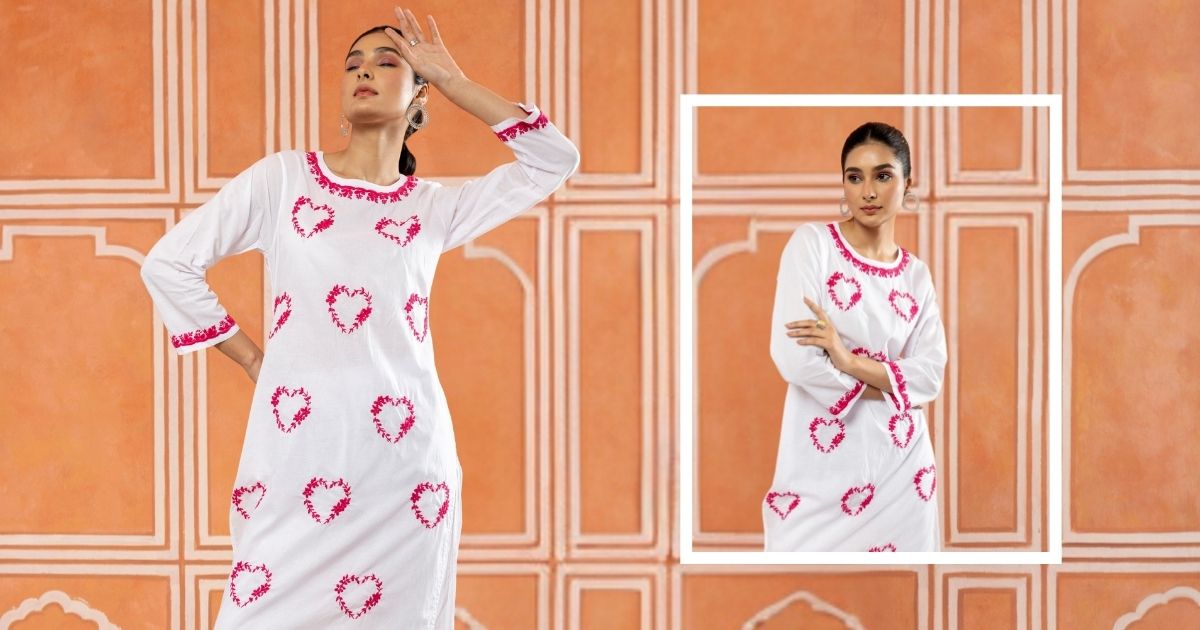If you are a fashion girl who loves comfort, then it's a given that you love kaftans and practically cannot live without them. Kaftans are not just known for their flowy silhouette and comfort but also for its rich heritage history. They were a power symbol then and a fashion symbol now. It's an ensemble that's as much a storyteller as it's a statement-maker.
The kaftan's origin is a mesmerizing journey through antiquity. From the majestic courts of ancient Persia to the sun-drenched lanes of contemporary India, the kaftan has ebbed and flowed, evolving yet eternally stylish.
In this article, we'll unwrap the layers of the kaftan's tale, exploring its cultural roots and renaissance as the coveted Indian kaftan.

The Origin and History of Kaftans
The kaftan has charted a remarkable journey from ancient riverbanks to today's high-fashion runways. Its story begins in the arid landscapes of Mesopotamia around 600 B.C., where it served a dual purpose: a functional garment against the heat and a reflection of one's societal position.
Its silhouette and significance underwent transformations as Persia's Sassanian dynasty embraced it between the 3rd and 7th centuries. Here, it wasn't just a protective cloak but a statement of prestige, often adorned with intricate patterns and luxurious fabrics that denoted one's status.

The kaftan's acclaim soon traversed boundaries. Thanks to the bustling Silk Road, by the early Islamic era, its influence reached Central and Western Asia. The 13th-century Ottomans further elevated its stature. In their courts, the kaftan wasn't merely a garment; it was a symbol. The opulent fabrics, meticulous embroideries, and the specific colors worn distinguished the royals from the commoners.
This enduring garment's versatility saw it being adopted and adapted by various cultures, with each rendition reflecting its own regional nuance. The kaftan's evolution, from its Mesopotamian roots to its Ottoman grandeur, is a testament to its timeless appeal and cultural confluence.
Modern Indian Kaftan Fashion
The kaftan, once a Middle Eastern classic, now dances to an Indian beat. Indian designers have infused it with local touches, blending traditional motifs like Gujarat's Bandhani or Kashmir's Aari embroidery with contemporary style. Perfect for the intense Indian summers, the modern kaftan seamlessly marries comfort with chic, becoming a must-have for both casual lounging and festive occasions. Today, it's not just a garment, but a reflection of India's global-meets-traditional fashion ethos.
Wrapping Up
The kaftan's tale, starting from its ancient roots and blossoming into today's global fashion scene, is symbolic of its timeless beauty and adaptability. It’s more than just a garment; it's a canvas reflecting diverse cultures and histories.
For those inspired by its rich narrative, Nama: Stay offers an exclusive collection that mirrors this legacy. From intricate Kashmiri summer aari embroideries to an expansive color palette and inclusive sizing with plus-size kaftan dresses, we've ensured every piece tells a story. Kaftans effortlessly fit any occasion. Pair kaftan tops with jeans for a casual day out or elevate your kaftan as a wedding dress by adding some jewelry and Chikankari palazzos for a unique touch. Our kashmir summer Kaftans are made by our artisans in Kashmir. Crafted in the finest quality crushed cotton our Kashmiri aari embroidered kaftans are a popular choice of celebrities and influencers like Priya Malik, Sakshi Sindhwani, Surbhi Sethi etc.

They have become an integral part of celebrity and influencer fashion and holiday wardrobes. They are an ideal choice for your beach vacations or your Paris trip. Our community has taken our kashmiri summer kaftans to the world.
As the sun sets on this kaftan journey, we invite you to begin your own with a selection from our distinguished collection. Celebrate the past, present, and future of fashion with Kashmiri Summer Aari Embroidered Kaftans from Nama: Stay.

















